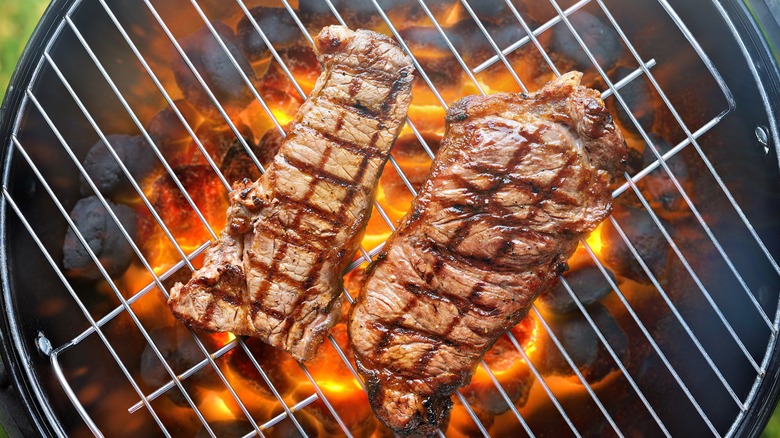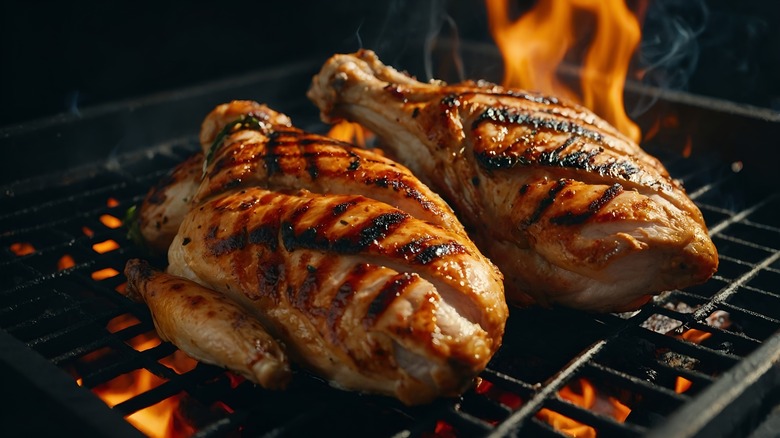The Crucial Step You Shouldn't Skip To Achieve Perfect Grill Marks
People love to bring out the grill for any number of reasons, whether it's because they simply enjoy cooking outdoors or appreciate the smoky flavors imparted to their favorite grilled vegetable recipe or a juicy burger. But no matter how good those barbecued foods taste, it does matter how they look to most people, and achieving those iconic grill marks is a skill that many backyard grill masters aspire to. So Rich Parente, chef and owner of Clock Tower Grill in Brewster, NY, offered Food Republic some advice on how to get beautiful-looking marks.
"When you put the meat on the grill, don't rush it; give it ample time to get a good sear before you move it," Parente explained. "When you finally do move or flip whatever you're cooking, move it to a new spot on the grill so it stays on a hot spot." Just like meat needs time to rest after grilling, it needs to sit, undisturbed, while cooking for those lines to form.
Even more importantly, Parente suggested a grill prep tip: Give the grates a good scrub before turning the flames on, and allow it adequate time to preheat. If your grate is covered in old food particles, the meat won't get that crucial metal exposure needed, as it will just be touching the build-up. You can also brush your meat and/or grates with a high-smoke point oil or ghee (clarified butter) before grilling to help speed up the process and encourage caramelization.
What are grill marks?
Grill marks are essentially a more intense version of the Maillard reaction, the chemical process that browns foods — you're just targeting the sections exposed to the hot metal grill grate. For this reason, you might accidentally overcook your meat by giving one side overexposure to high heat, especially if it's a thin cut. Cast iron or aluminum grates, which can reach higher temperatures, are one great alternative to generic steel grill grates for kickstarting that chemical reaction before the rest of your meat has time to overcook.
Setting your meat at a 45 degree angle on the grates is also crucial to getting those diagonal grill marks, and once the meat easily lifts up, you can rotate it 90 degrees for a cross-hatch or diamond pattern. Flip and repeat on the other side, keeping an instant-read thermometer on hand to check the doneness of your steak or burger. Avoid aiming for marks on lean proteins like chicken or fish, and stick to fattier options, like beef ribeye or pork ribs, which won't dry out as easily.
You might also be surprised to know that one of the best ways to get grill marks doesn't require a grill at all. Using a cast iron grill pan over a stove top, or a ridged burger press on a flat top griddle, are both good alternatives. Because the meat is fully exposed to a hot metal surface, it will cook more evenly, but still gain a similar appearance.


